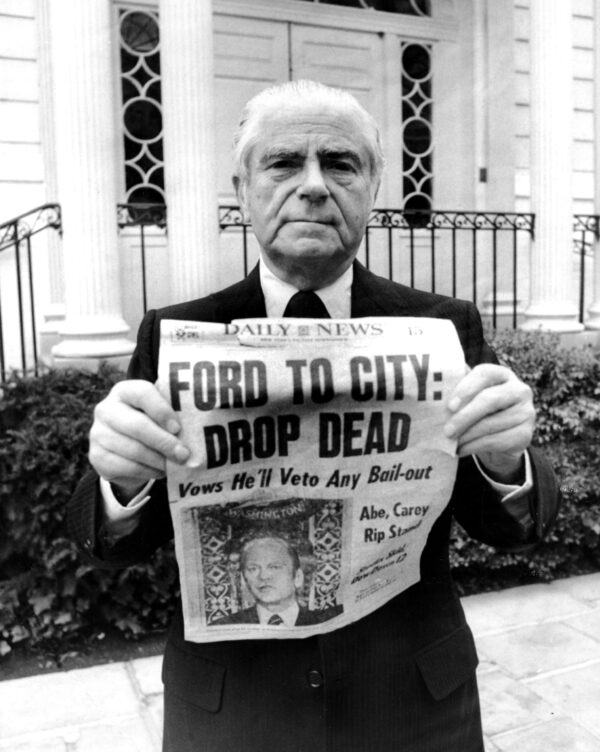
Who knew that a film about accountants, bureaucrats, and municipal bond offerings could ever be interesting, let alone downright enjoyable? After all, hasn’t economics often been referred to as the “dismal science”?
Despite its lugubrious title, Drop Dead City is actually quite an undismal description of how New York City was driven into near-bankruptcy half a century ago. The film’s title is a reference to the famous Daily News headline “Ford to City: Drop Dead” that described the unwillingness of the federal government to bail out the beleaguered city. New York must have survived, for the film premiered last week at the DOC NYC festival.
Directed by Peter Yost and Michael Rohatyn, this engaging documentary focuses its lens on the often-flawed human players responsible for the fiscal crisis. Notable among them are Mayor Abraham Beame, the film’s tragic antihero: the bumbling if well-meaning bureaucrat whose decisions as the city’s comptroller were largely responsible for the debacle; and Felix Rohatyn, his likeable nemesis who headed the Municipal Assistance Corporation that was created to rescue the city. Also making a cameo appearance is Governor (later Vice President) Nelson Rockefeller, whose starry-eyed stance led him to overlook the fact that the days of wine and roses could not last forever. Not enough is said, however, about Mayor John (Fun City) Lindsay, Beame’s equally starry-eyed predecessor.
Drop Dead City points out that the generous contracts negotiated by the city’s powerful municipal labor unions contributed to the fiscal crisis. Among the players who strut and fret their hour on the stage include Albert Shanker of the United Federation of Teachers, Ken McFeeley of the Patrolmen’s Benevolent Association, and Victor Gotbaum of the Sanitation Workers Union.
Kudos to film editors Don Kleszy and Anna Auster for their skill in juxtaposing the financial data with graphic scenes depicting the grittiness of New York City during the “bad old days” of the 1970s. Graffiti-pocked subways, burnt-out blocks, and garbage piling up in the streets vividly convey the depths of the crisis in a way that mere statistics could not.
If I may be permitted a personal reflection, Drop Dead City unleashed a flood of memories for me, a relative newcomer to the Big Apple who was part of the “brownstone revival” in Brooklyn in the 1970s. I only wish that this engaging film would have paid more attention to the contributions made by the unsung heroes of the fiscal crisis: the eight million ordinary New Yorkers who rose to the occasion via block associations and other civic enterprises that organized street sweep-ins, planted community gardens, and dutifully paid their taxes to keep the city from even more calamitous outcomes.
Rating A-
Check out other articles by Edward.
Here’s the trailer of the film.

